The Importance of Lister Shearing Star Clippers in Agriculture
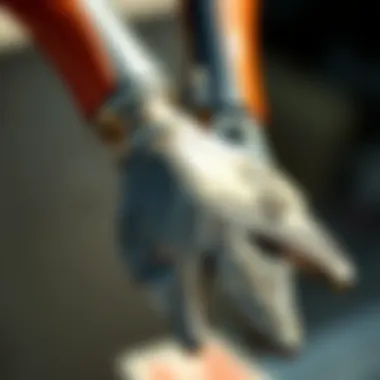
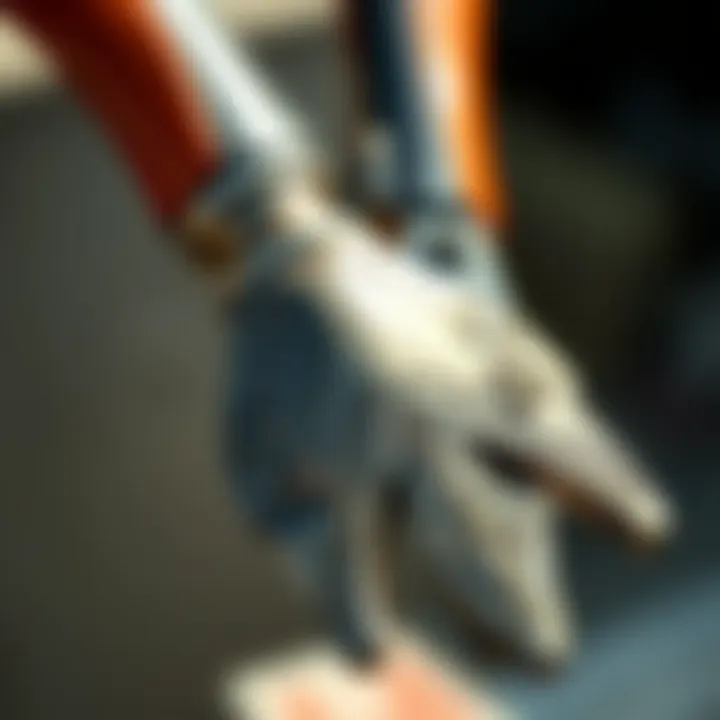
Intro
The agricultural landscape is in constant flux, adapting to both technological advancements and the demands placed upon it by society. One can't overlook the significance of tools that facilitate more efficient farming practices. A pivotal player in this arena is the Lister Shearing Star Clipper, a machine that has carved out its niche in livestock management. Aimed at making shearing efficient and humane, these clippers contribute not only to the welfare of the animals but also to the productivity of farms.
In this exploration, we'll analyze the operational nuances of Lister Shearing Star Clippers, delve into their innovative designs, and discuss the practical applications that enable farmers to optimize their livestock care strategies. Understanding these clippers could provide valuable insights for both novice and seasoned farmers, helping them navigate the complex terrains of modern agriculture.
Topic Overview
Definition and Importance
Lister Shearing Star Clippers are specialized devices designed for shearing livestock, particularly sheep and goats. Their primary function is to remove wool or fleece efficiently, promoting not only animal comfort but also enhancing productivity in wool production. Given the growing emphasis on animal welfare, the humane use of these tools can significantly impact both the quality of the wool produced and the overall management of livestock.
The importance of these clippers extends beyond mere shearing. They reduce the risk of injury to both the animal and the shearer, leading to a smoother operation under various conditions. In a world increasingly aware of sustainable practices, the Lister clippers stand out. They help farmers maintain high standards of care while promoting responsible farming techniques.
Brief History and Evolution
The roots of shearing technology can be traced back to centuries ago when farmers relied on manual tools such as hand shearers or blades. With time and the introduction of powered equipment, efficiency skyrocketed. Lister introduced the Shearing Star Clipper, establishing a reputation for reliability and effectiveness. As agriculture embraced mechanization, so did shearing practices, evolving into a seamless blend of craftsmanship and technology.
Over the decades, these clippers have been fine-tuned to increase their efficacy and ease of use. Innovations have included lightweight materials and ergonomically designed handles that reduce strain on the user. As the demand for quality wool continues to rise, Lister clippers have adapted to meet these needs while maintaining a commitment to sustainable practices.
Key Techniques and Innovations
Sustainable Farming Practices
In today’s agricultural economy, the emphasis on sustainability cannot be overstated. Lister Shearing Star Clippers support this movement by enabling efficient and humane shearing. This not only ensures the animal's comfort but also allows farmers to implement more sustainable practices. When livestock are managed properly, it leads to healthier environments and reduces waste, benefitting all involved.
Some techniques and practices to consider include:
- Scheduled Shearing: Aligning the shearing schedules with the seasons to enhance wool quality and maintain animal health.
- Regular Maintenance Practices: Ensuring that clippers are well-maintained promotes longevity and performance.
- Education and Training: Farmers can benefit from understanding the best shearing techniques to reduce animal stress.
Advanced Agronomic Technologies
The integration of advanced technologies into agricultural practices has transformed how tasks are approached. The Lister Shearing Star Clippers are at the forefront of this trend. Equipped with powerful motors and high-quality blades, these clippers enable shearers to complete tasks more quickly, thus maximizing productivity.
New features include:
- Cordless Options: Offering greater mobility and ease of use in different environments.
- Variable Speed Settings: Allowing the operator to adjust the speed for different types of fleece or livestock personality.
- Diagnostic Tools: Some models feature built-in diagnostics to alert users of potential maintenance needs.
Practical Applications
Step-by-Step Guides
- Preparation: Ensure the shearing area is clean and free from distractions.
- Equipment Check: Inspect the clippers for blade sharpness and motor function.
- Animal Handling: Ensure animals are calm—this can involve using quiet environments and gentle handling methods.
- Shearing Technique: Adopt a smooth, consistent motion to avoid injuring the animal.
- Post-Shear Care: Inspect the animal post-shear for any injuries and allow for adequate recovery time.
Case Studies or Real-World Examples
Farmers around the globe have reported increased efficiency after adopting Lister Shearing Star Clippers. For example, a sheep farmer in Australia noted a 30% reduction in time spent shearing whilst simultaneously improving wool quality through effective technique and timing. Another case in New Zealand showed how these clippers not only helped in production but also enhanced animal welfare, bringing greater satisfaction among livestock and farmers alike.
"These clippers changed the game for us. The animals are calmer, and we get better wool; it’s a win-win situation." – A proud farmer.
By understanding the role that Lister Shearing Star Clippers play in modern agriculture, farmers can leverage this tool to improve both efficiency and animal welfare in their practices, paving the way toward a more sustainable future.
Understanding Lister Shearing Star Clippers
In modern agriculture, the significance of effective tools can't be overstated. Lister Shearing Star Clippers stand out, especially when it comes to livestock management. These clippers not only facilitate the shearing process but also play a crucial role in enhancing the overall health and well-being of the animals. This section aims to unpack the essentials of these clippers, diving into their history, designs, and the inherent advantages that make them an indispensable part of agricultural practice.
History and Development
The journey of Lister Shearing Star Clippers began in the early 20th century, a time when innovations in agricultural tools were just starting to take off. Initially, clipping tools relied heavily on manual effort, which was laborious and inefficient. With the introduction of electric motors, the dynamics changed. Lister, an early pioneer in the field, recognized the need for a reliable and efficient system for shearing. Over the decades, advancements in engineering and user feedback have guided the evolution of these tools. Today, they embody a fusion of tradition and modern technology, making shearing a far more streamlined process.
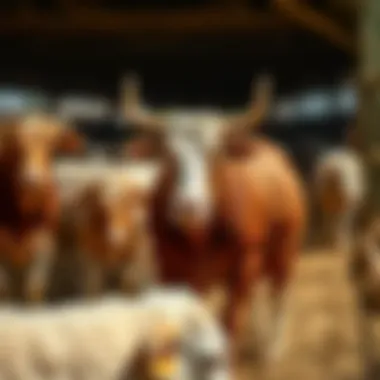
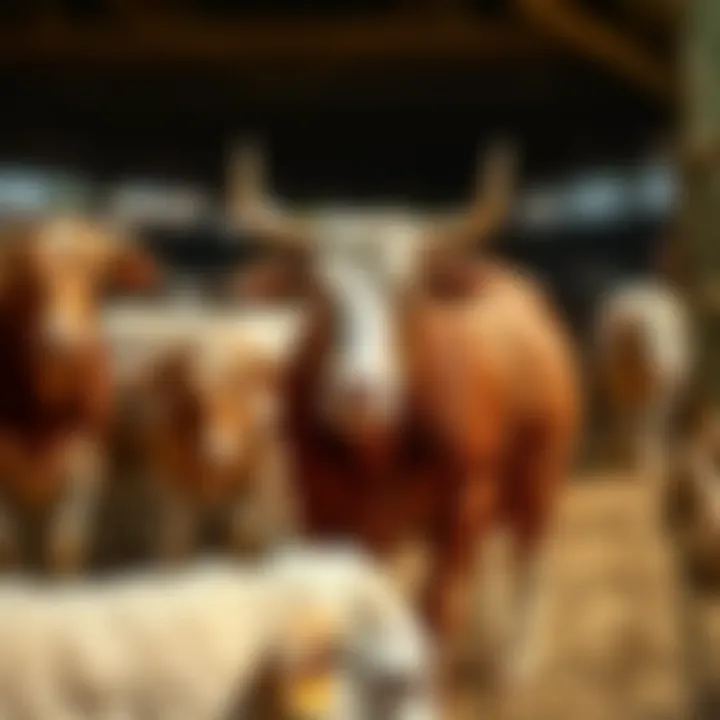
Design Features
Motor specifications
The motor specifications in Lister Shearing Star Clippers are a game-changer. Equipped with powerful, modern motors, these clippers deliver superior performance compared to their predecessors. The ability to sustain high RPMs while remaining energy-efficient is a hallmark characteristic. This powerful motor allows for quick and effective shearing, reducing the time spent on each animal and minimizing stress on both the livestock and the operator. Additionally, the low-vibration technology incorporated into the motor contributes to extended usability, allowing farmers to work longer without fatigue.
Durability and materials
Durability and materials used in the construction of these clippers are another focal point. Built with high-quality alloys and polymers, Lister clippers are designed to withstand the rigors of diverse agricultural environments. The choice to utilize materials that resist wear and tear is especially beneficial, ensuring that the clippers can handle constant usage over extended periods. Not only does this durability contribute to a longer lifespan, but it also reduces the cost of frequent replacements, making it a wise investment for farmers.
Blade technologies
Innovative blade technologies in these clippers represent a significant leap forward. Their blades are crafted from top-tier steel, designed for sharpness and longevity. The unique feature of quick-change systems allows farmers to swap out blades in a matter of seconds, enhancing efficiency during shearing sessions. This adaptability means that one set of clippers can serve multiple purposes, which is a huge plus for farmers with different livestock needs. However, careful handling is essential to maintain the integrity of the blades, as dropping or improper handling can lead to chips and nicks.
In summary, understanding the mechanics and design principles behind Lister Shearing Star Clippers provides insight into why they are considered top-of-the-line in modern agriculture. Their combination of powerful motor capabilities, durable materials, and cutting-edge blade technology truly sets them apart within the industry.
Functional Aspects of the Clippers
Understanding the functional aspects of Lister Shearing Star Clippers is crucial for any agricultural professional or livestock enthusiast looking to enhance their operations. These clippers are not just tools; they are essential devices that can significantly impact the efficiency of livestock management. With an array of features designed to improve Shearing processes, farmers must take these aspects into consideration to maximize their potential.
Operational Efficiency
Operational efficiency relates directly to how effectively clippers can perform their tasks without wasting time or energy. The following elements are vital in assessing the operational efficiency of Lister Shearing Star Clippers:
Speed and accuracy
Speed and accuracy are perhaps the two most significant characteristics of these clippers. They allow for quick shearings without sacrificing the quality of the cut. A notable feature is the precision blade design, which ensures that shearing happens steadily and minimizes the risk of hurting the animals. This characteristic is particularly beneficial during the busy shear season when every minute counts. Less time spent on shearing can lead to improved animal comfort and better overall welfare. However, users should balance speed with careful handling, as rushing can sometimes lead to errors.
Noise levels
Noise levels can greatly influence how livestock react during the shearing process. Lister Shearing Star Clippers are designed to operate with reduced noise, making them a less stressful option for animals, who can be sensitive to loud sounds. The quiet operation not only benefits the animals but also provides a more pleasant working environment for farmers. This is a critical factor, as calmer animals lead to safer and more effective shearing. However, it’s essential to note that while sound levels are reduced, they are not entirely eliminated. Users should remain mindful of the operational noise and how it affects livestock behavior.
Energy consumption
Energy consumption is another key consideration. Lister Shearing Star Clippers are designed with efficiency in mind, often featuring powerful motors that use energy judiciously. A lower energy usage means less strain on power sources and overall operating costs. This attribute not only makes them a smart investment but also contributes to sustainable farming practices by minimizing energy waste. However, a more powerful motor may increase the weight of the clipper slightly, which is another aspect to consider when looking at overall usability.
User Experience
User experience encompasses the overall usability of the clippers from the perspective of the operator. Understanding how comfortable and easy these clippers are to use can prevent strain and injury while promoting effective shearing practices.
Ease of use
Ease of use is an essential feature of Lister Shearing Star Clippers, which can positively impact productivity. With intuitive controls and designs, these clippers allow users to navigate complex maneuvers without frustration during operation. They often come with simple tutorials that can guide beginners, making them accessible for various experience levels. This aspect makes them very popular among both new and seasoned farmers.
Weight considerations
Weight considerations play a vital role in user experience. Lighter clippers are generally easier to handle, reducing fatigue during long shear sessions. Lister Shearing Star Clippers strike a balance, incorporating materials that keep weight manageable while ensuring durability. This characteristic helps prevent strain on the hands and arms, which is a common issue among operators.
Ergonomic designs
Ergonomic designs are a defining feature of modern clippers. Lister Shearing Star Clippers feature grips that are comfortable and designed to fit the natural hand shape, minimizing unnecessary force during use. This aspect is particularly beneficial for those who shear large numbers of animals, as the design helps reduce stress on the hands, wrists, and arms. The downside, however, is that highly ergonomic models might come at a higher price point, which is a factor to consider when investing.
Finale
In summary, a thorough understanding of the functional aspects of Lister Shearing Star Clippers illuminates their pivotal role in agriculture. These clippers, with their emphasis on operational efficiency and user experience, are invaluable tools for enhancing livestock management. By focusing on speed, noise levels, energy efficiency, ease of use, weight, and ergonomics, farmers can make informed choices that ultimately benefit both their animals and their operations.
Applications in Livestock Management
The use of Lister Shearing Star Clippers is pivotal in the realm of livestock management. These clippers serve multiple purposes, ultimately contributing to the well-being of animals and the efficiency of agricultural practices. From enhancing hygiene to reducing stress during shearing, the role these tools play is paramount and cannot be understated. Proper application of these clippers helps ensure not only the quality of wool and hair but also the overall health of the animals, making it a cornerstone for effective livestock management.


Hair and Wool Shearing
Best practices for shearing
When it comes to wool and hair shearing, employing best practices is fundamental. Proper shearing techniques can dramatically affect the health of the animal and the quality of the wool harvested. One key characteristic of best practices is the timing and method applied during the shearing process. Shearing should generally be conducted during mild weather conditions to minimize stress on the animals. This practice aligns closely with both comfort and operational efficiency.
Additionally, ensuring the clipper blades are sharp and well-maintained reduces the chances of pulling on the hair, which can cause pain to the animal. This simple yet effective practice enhances overall animal welfare and yields higher-quality wool, which is a large part of the market. Moreover, regular shearing helps keep the animals cool in warmer months, reducing the risk of heat stress.
Seasonal considerations
Shearing should also be approached with keen awareness of the seasons. Timing can significantly affect wool quality and animal health. Typically, shearing is performed in early spring for animals with heavy coats. This ensures they are prepared for the heat of summer while allowing their coats to grow back before winter sets in. The unique feature of seasonal considerations lies in its adaptability; different climates or livestock breeds may require varying approaches. While this method is beneficial for maintaining animal comfort, it does require careful planning and knowledge of local weather patterns. Failing to account for seasonal changes can lead to inadequate shearing timing, affecting both wool production and animal health, which can have long-term repercussions for farmers.
Animal Health and Welfare
Impact on hygiene and comfort
The maintenance of hygiene and comfort plays a crucial role in the welfare of livestock. Regular shearing not only removes excess hair, which can trap dirt and parasites, but also improves airflow to the skin, thus preventing fungal infections and promoting overall health. When animals are clean and comfortable, their stress levels decrease significantly, resulting in better milk and wool production. A vital aspect of this is the attention to detail during shearing to ensure no nicks or cuts occur. This makes the tools used, particularly Lister Shearing Star Clippers, indispensable as they provide a smooth cut while ensuring safety. Ignoring hygiene can lead to severe health issues in livestock, proving that effective use of shearing tools directly correlates with improved animal welfare outcomes.
Management of shearing stress
Managing shearing stress in livestock is another layer of the care that must be considered. The shearing experience can be stressful for many animals, especially if not handled properly. A key approach is to desensitize animals to the noise of the clippers before the actual shearing begins. Gradual exposure can make the process smoother and less traumatic. Utilizing Lister Shearing Star Clippers, known for their relatively lower noise levels, can greatly contribute to reducing anxiety among livestock during the shearing sessions. Maintaining a calm environment, coupled with proper handling techniques, proves invaluable in minimizing stress. If not managed well, shear stress can lead to behavioral issues and health complications, reinforcing the need for thoughtful approaches in livestock management.
Maintenance and Care for Longevity
Taking care of Lister Shearing Star Clippers is not just recommended; it's essential. Proper maintenance ensures the longevity of the clippers and contributes to their overall efficiency, making them an invaluable asset in modern agriculture. Investing time in maintaining these tools saves money in repairs and replacements down the line.
Benefits of regular upkeep include:
- Enhanced performance: Sharp, clean blades cut better, leading to a more efficient shearing process.
- Improved lifespan: Regular maintenance significantly reduces the wear and tear on the clippers.
- Consistent results: Well-maintained clippers deliver uniform shearing, which is crucial for animal welfare and wool quality.
To achieve these benefits, it's crucial to follow a structured maintenance routine that focuses on routine cleaning and lubrication, along with troubleshooting any common issues that may arise.
Regular Maintenance Routines
Cleaning the blades
Keeping the blades clean is fundamental in ensuring optimal performance. When the blades accumulate dirt, hair, or grease, it can lead to a number of problems, including overheating and suboptimal cuts. By regularly cleaning the blades, you set a solid foundation for functional longevity.
The key characteristic of blade cleaning is that it maintains sharpness, which is crucial for effective shearing. Properly cleaned blades help in achieving a smooth cut, which not only benefits the livestock but also reduces the exertion required by the user.
A unique aspect of this cleaning process involves using a brush specifically designed for the blades. Conventional brushes may scratch delicate surfaces, but specially designed brushes prevent damage while ensuring the blades are ready for action. Remember, a well-maintained blade can mean the difference between a productive shearing session and a frustrating one.
Lubrication guidelines
Lubrication is another key aspect often overlooked. Proper lubrication reduces friction between the moving parts, which directly contributes to the smooth operation of the clippers. The benefit of a well-lubricated clipper cannot be overstated; it helps maintain speed and accuracy during the shearing process.
The essential feature of good lubrication guidelines is that they recommend using light oils, which help avoid the accumulation of debris that could hinder the clippers’ effectiveness. Failing to lubricate can lead to the clippers overheating or wearing down much faster, affecting overall performance quality. This is especially vital in an industry where time is money.
While it may seem like a minor task, regularly lubricating your clippers ensures a seamless operation and extends the life of the machine—making it a wise choice for anyone looking to maintain their equipment.
Troubleshooting Common Issues
Performance problems
Sometimes, performance issues can arise despite diligent maintenance. Identifying these problems quickly can prevent more significant complications down the line. Common performance problems might include slow operating speed or inconsistent cut quality. These can stem from a build-up of dirt or damage to the blades.
The key characteristic of understanding these issues is recognizing their root causes. By addressing them quickly, you can maintain high productivity levels without skipping a beat. Regular checks can also remedy many performance issues before they escalate, keeping operations smooth and efficient.
It's crucial to practice proactive measures such as periodic checks, so you stay ahead of any potential disruptions.
Mechanical repairs
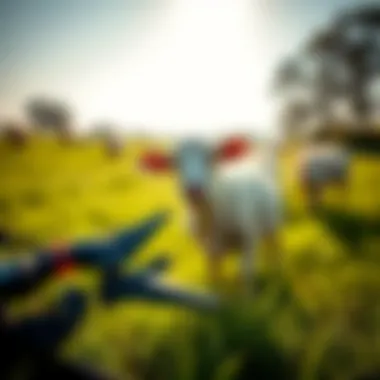
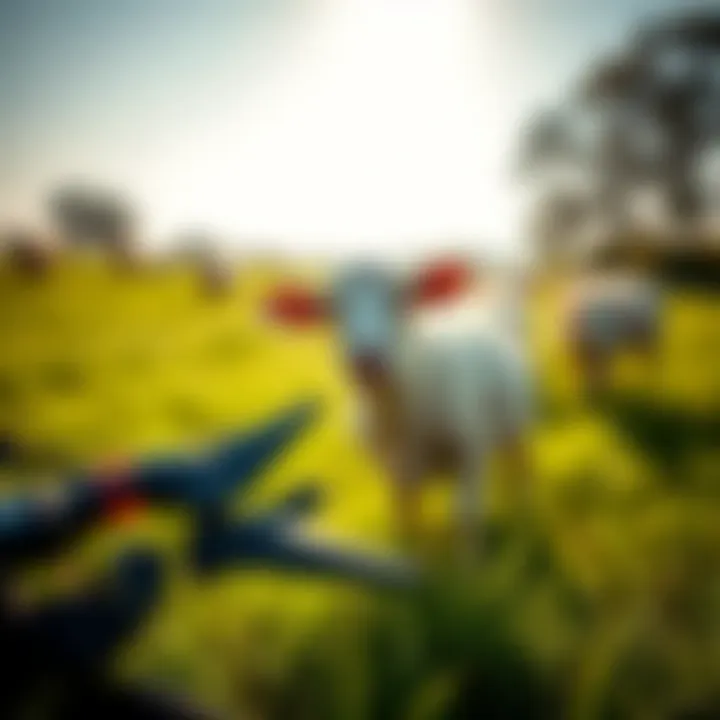
Mechanical repairs might seem daunting, yet they are essential for any equipment user. Knowing how to handle mechanical issues can save time, money, and a great deal of hassle. Understanding the common repairs, like replacing a motor, is part of responsible ownership. The key feature of mechanical repair knowledge is that it empowers the user.
Being familiar with the components of your clippers and having a basic understanding of when something needs fixing can keep your workflow from grinding to a halt. Moreover, while minor repairs can often be handled in-house, knowing when to seek professional help is equally important.
The unique aspect of mechanical repairs lies in their ability to significantly extend the life of your equipment, allowing you to maximize your investment. By tackling repairs promptly, you enhance the reliability of your shearing process while minimizing downtime.
Remember, proper maintenance not only protects your clippers but also uplifts the overall quality of your agricultural practice, keeping everything running like a well-oiled machine.
User Insights and Testimonials
In the realm of livestock management, user insights and testimonials are pivotal. They provide a window into the real-world application of Lister Shearing Star Clippers, allowing prospective buyers and farmers to gauge their significance beyond technical specifications. Feedback from users sheds light on the practical experiences, offering diverse perspectives on benefits, usability, and impact on agricultural practices.
Understanding the pros and cons as articulated by actual users helps demystify the often complex process of shearer selection. These insights not only inform about the product’s reliability over time, but also shine a light on the efficiency of maintenance routines and overall performance in various conditions. Readers can grasp how these clippers stand out from competitors when it comes to specific needs, such as shear speed or comfort in long usages.
Case Studies
Real-life case studies highlight the effectiveness of Lister Shearing Star Clippers in various farming scenarios. For instance, one dairy farmer from New Zealand, John, reported a substantial increase in workflow efficiency after incorporating these clippers into his routine. Previously, shearing tasks often took him more than seven hours, but with the right clipper model, he now accomplishes them in half the time.
Moreover, Johanna, a sheep farmer from Australia, shared her experience on a farming forum, emphasizing how the advanced blade technology helped reduce pulling and discomfort for her flock. This feedback is especially pertinent during the high-pressure shearing season when animal welfare is a primary concern. Such case studies reveal both the clippers’ role in improving farmer productivity and their contribution to promoting animal comfort, yielding for better outcomes overall.
Expert Reviews
Expert reviews form another layer of understanding regarding the capabilities of Lister Shearing Star Clippers. Agricultural specialists and machinery reviewers often contribute in-depth articles and videos that analyze the clippers from a technical viewpoint. These assessments focus on aspects such as the product’s design, ergonomic benefits, and functional capabilities.
Prominent agricultural journals and websites, such as FarmWeek and AgriTech, frequently host reviews that delve into user feedback fused with expert analysis. In these resources, experts weigh in on the durability of the clippers in farm conditions as well as the technological advancements that set certain models apart. For example, an expert article featured on FarmProgress.com explored how improved motor specifications lead to an energy-efficient operation, making these clippers a viable option for long-term use.
According to a review from AgReview.com, the Lister Shearing Star Clipper has consistently received high marks for its power and reliability in real-world agricultural settings.
By sourcing information from both users and experts, farmers can make informed decisions. This dual perspective ensures that all angles, whether they relate to cost-effectiveness, user satisfaction, or innovative features, are considered. This approach not only reinforces the clippers' role in modern agriculture but also helps build a community of informed users who contribute back through their feedback.
Sustainability Considerations
Sustainability in agriculture is no longer just a buzzword; it's the backbone of modern agricultural practices. The role of Lister Shearing Star Clippers is particularly important when examining how these tools contribute to sustainable farming efforts. By integrating efficient technologies and thoughtful designs, these clippers are helping farmers reduce their environmental footprint while maximizing productivity.
Impact on Sustainable Farming
Reduction of waste
One of the standout benefits of using Lister Shearing Star Clippers is their ability to minimize waste during the shearing process. Waste reduction is integral in sustainable farming as it helps offset resource consumption. Not only do these clippers allow for precise cuts, but they also ensure that materials, such as wool or animal hair, are utilized to their fullest potential.
Using these clippers means less wool is discarded, and this can lead to more sustainable practices downstream. The leftover materials can be repurposed for various applications, such as insulation or biodegradable products, which is a notable move toward a circular economy.
In essence, the waste reduction feature represents modern efficiency. Farmers who adapt to these technologies often find that cutting down on waste translates to both environmental and economic gains, enhancing their overall sustainability profile.
Energy-efficient clippers
Another vital aspect in the conversation about sustainability is energy efficiency. The design of Lister Shearing Star Clippers incorporates features that significantly lower energy usage. Energy-efficient clippers not only save electricity, but they also reduce operational costs for farmers over time.
The technology behind these clippers often includes smart motors that automatically adjust power based on cutting conditions. This unique feature allows for optimal performance without the hefty energy bill.
Farmers utilizing these clippers can expect to see a decline in their energy consumption, which is a win-win situation for both their pockets and Mother Nature. The increased affordability and lower carbon footprint of energy-efficient clippers showcase why they are becoming a popular choice for modern agriculture.
Future Innovations
Emerging technologies in shearing
Looking ahead, it’s clear that the future of shearing will be influenced by exciting emerging technologies. Innovations like smart sensors and AI-driven solutions are making waves in how we approach livestock management. For example, clippers that can assess the health of an animal's coat or skin through integrated sensors could revolutionize how farmers shear.
The integration of such technologies not only enhances productivity but also prioritizes animal welfare. Knowing when not to shear, based on data gathered during the process, illustrates how emerging technologies are pushing the envelope in sustainable practices.
Sustainable materials
Moreover, the materials used in manufacturing Lister Shearing Star Clippers are beginning to shift toward more sustainable options. Manufacturers are increasingly exploring biodegradable and recyclable materials in their products, aligning with the growing emphasis on sustainability.
This shift can significantly lower the carbon footprint of manufacturing, allowing for more responsible consumption within the agricultural sector. The adoption of sustainable materials not only appeals to eco-conscious consumers but also serves as a reminder that the future of agriculture may very well depend on our ability to innovate responsibly.
In summary, Lister Shearing Star Clippers are not just tools; they are forward-thinking instruments in sustainable farming that reflect the needs and challenges of modern agriculture. This blend of sustainability, efficiency, and innovation positions these clippers as a vital part of the agricultural landscape.



